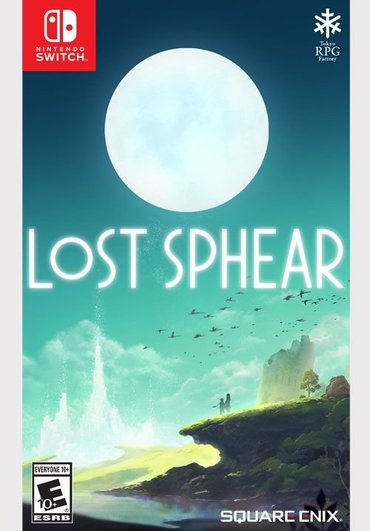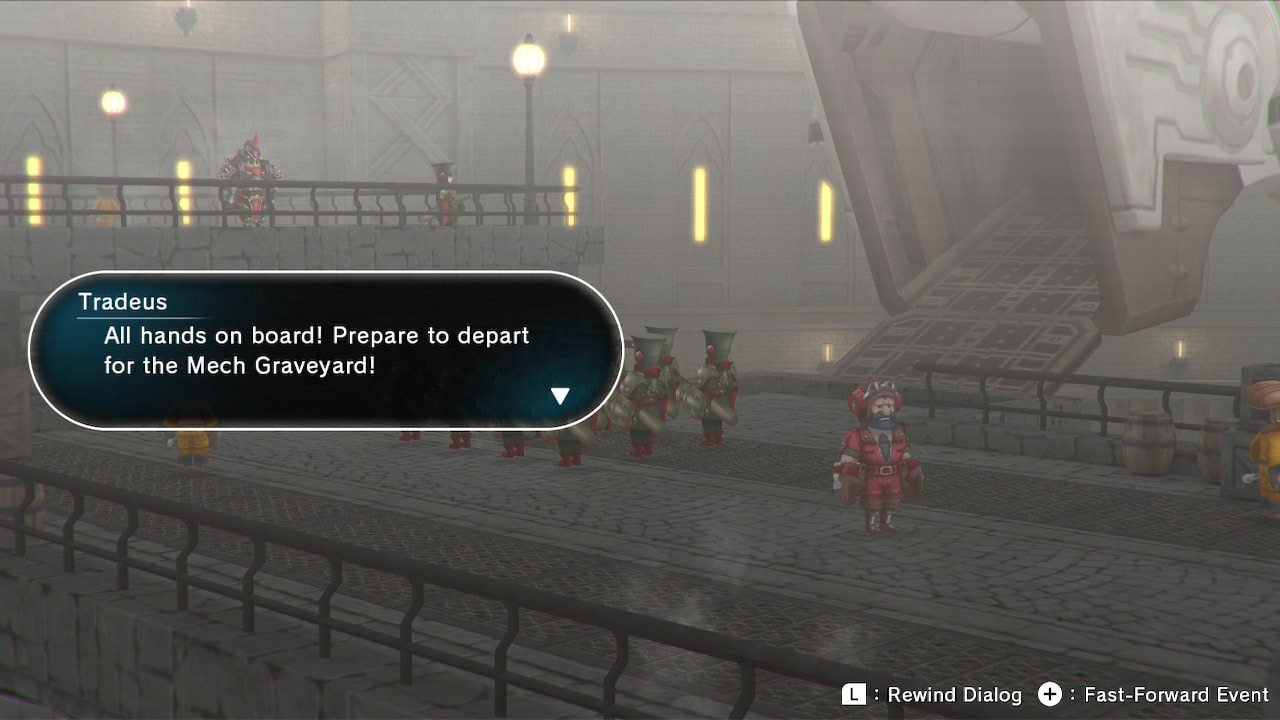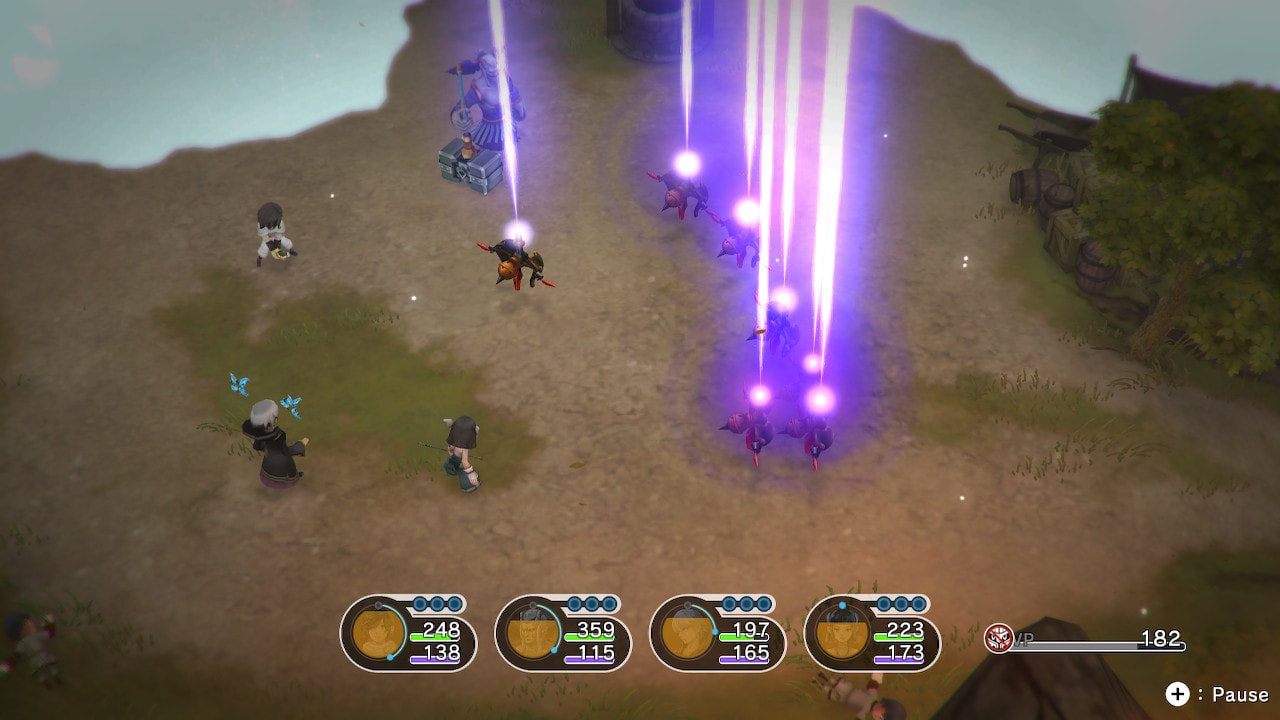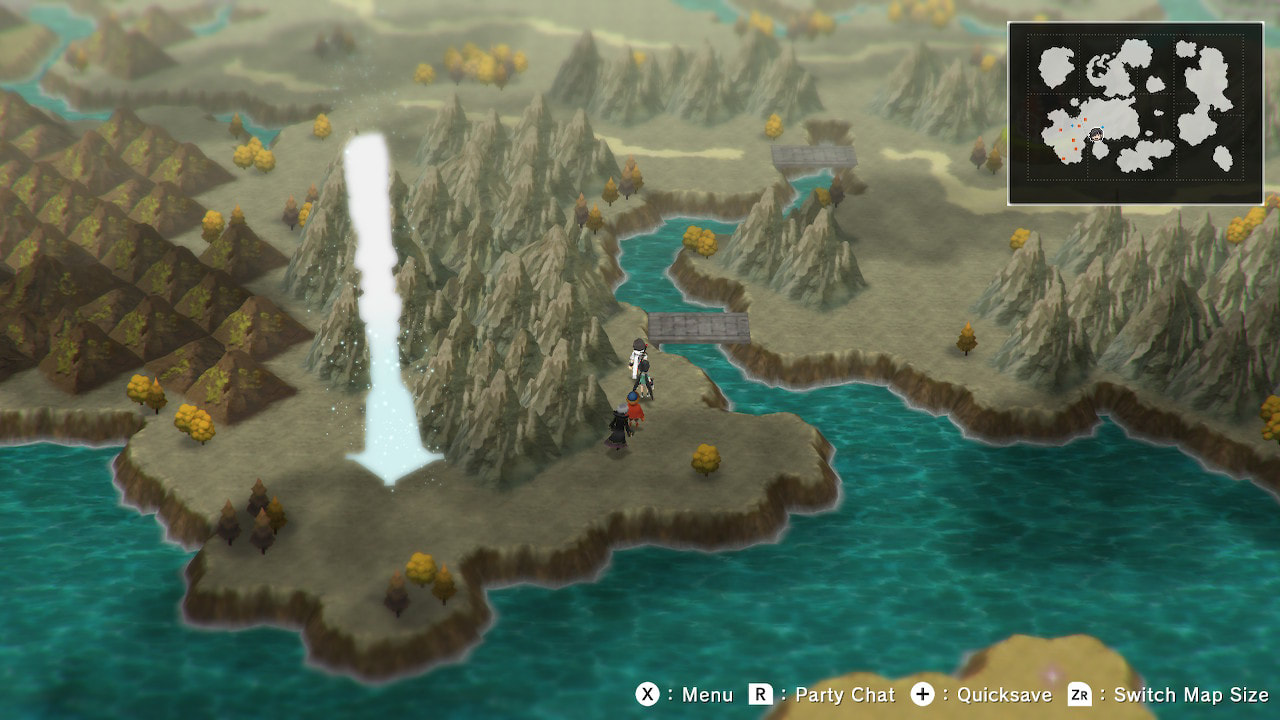Beat this two weeks ago. Posting today. God do I suck.
1. Antarctic Adventure (Famicom)
2. Nuts & Milk (Famicom)
3. Commando (Atari 2600)
4. Binary Land (Famicom)
5. Devil World (Famicom)
6. Disney's Aladdin (SNES)
7. Popeye (NES)
8. Super Mario Land (Game Boy)
9. Ys: The Vanished Omens (Sega Master System)
10 Ys II: Ancient Ys Vanished - The Final Chapter (Famicom)
11. Final Fantasy Mystic Quest (SNES)
12. Lunar: The Silver Star (Sega CD)
13. Otenba Becky no Daibouken (MSX)
14. Metroid (Famicom Disk System)
15. Mahou Kishi Rayearth (Game Boy)
16. Wabbit (Atari 2600)
17. Kirby's Dream Land (Game Boy)
18. Warpman (Famicom)
19. Final Fantasy (NES)
20. Transformers: Convoy no Nazo (Famicom)
21. Arcade Archives: Moon Patrol (Switch eShop)
22. Gremlins (Atari 2600)
23. Arcade Archives: Ninja-Kid (Switch eShop)
24. Shining in the Darkness (Genesis)
I had been acquainted with the excellent Genesis
Shining Force strategy RPGs for several years before coming to the realization that they comprised a subset of a larger series known as
Shining. Notable non-SRPG installments include
Shining Wisdom,
Shining the Holy Ark, and the game that started it all --
Shining in the Darkness, developed by Climax Entertainment in conjunction with Sonic! Software Planning.
Darkness is a first-person dungeon crawler. Some refer to this as a sort of Japanese "WRPG" though this title lacks the complexities (and annoyances) of its North American brethren. There is no class system to be found here. Nor is there alignment, a food meter, or characters that advance in age (though anyone who attempts to tackle this will feel aged by the end). No,
Darkness is ultimately a true "JRPG" displayed in a first-person format, much like the Hummingbird Soft
Deep Dungeon "classics" that predate it.
The plot is a threadbare necessity. A hero, canonically named Hiro, is tasked with saving a kingdom from an evil sorcerer and his goons. There's a princess rescue too, though much like
Dragon Quest it serves to advance the plot rather than wrap up the storyline. Hiro is soon joined by a duo of companions: the stout Milo and elven Pyra. The characters are differentiated in terms of combat prowess. Hiro is the unmistakable tank, with no magical competency. Pleasantly, the "black & white mage" trope was eschewed here in favor of making Milo and Pyra well-rounded fighters who both possess an arrangement of offensive, defensive, and buff spells.
Progression in the game requires one bounce back and forth between three central locations, which are simply chosen from a "world map" with a cursor. The castle is mostly useless, unless one really enjoys chatting with the king and his cronies, though an occasional visit is required to "trigger" the next game event. The town is arguably the most interesting aspect of the entire
Shining in the Darkness experience, and is where the developers best showcase their artistic merits. The scenery here is impeccably crafted, populated by a mixture of human and elvish townsfolk, something that would later become a series trademark. NPCs are undeniably goofy; shopkeepers are wont to strike poses or fall right over amid transactions. Characters have a sort of Disney-anime appearance, with the ladies all impossibly thin and long-legged, and the Westernized box art coincidentally doesn't stray too far from reality. There's a tavern in town, populated by loquacious weirdos lounging about in varying stages of inebriation. This locale doubles as the typical HP-recovering inn; staying overnight requires one first ring a bell which summons the adorable pointy-eared innkeeper. The game contains a smattering a cutscenes, most of which occur in or directly outside the tavern. In one "famous" scene Pyra finds herself scolded, and subsequently spanked, by her mother, even though both appear to be grown women. Uh, well played, Climax Entertainment.

Also worth mentioning are the delightful and oddball aesthetic quirks found here and, later, in the
Shining sequels. Menus are all icon-driven. You never choose "Yes" but instead an image of a man nodding. Likewise, every item, spell, and piece of equipment is illustrated. There's rudimentary character "speech" too, which has to be heard to be believed. Taking a page from the
Final Fantasy playbook,
Shining in the Darkness has no proper title screen but instead a grand "credit roll" when a new game is started. And there is acknowledgement that this is indeed a game.
Darkness breaks the fourth wall, as the file select screen features an old man in a rocking chair, ready to resume or halt the story according to the player's whim. In sequels the old guy was replaced by a witch and (of course) a kawaii elf girl.
There isn't much to say about the soundtrack. It's present and appropriate, but fundamentally feels stock and rushed. The music swells when it's supposed to, lulls when it's supposed to, and the battle theme is just as chipper and annoying as you'd expect, but nothing leaves a lasting impression.
The labyrinth. This is a first-person RPG, after all, so most of the game's time is dedicated to exploring this monstrosity. Unfortunately, it's the least interesting aspect of the game to talk about. The labyrinth is comprised of five floors, and several disparate basement "trials" that must be completed before a portal bridging floors one and two is revealed. Movement is grid-based. There's no true in-game map to speak of, though Pyra possesses a spell that reveals current location coordinates and illustrates the surrounding (explored) area. Navigational difficulty is raised gradually with all the typical hazards making an appearance: pitfalls, warps, spinners, ascending ropes. It's possible to warp back to town at any time (again, with a Pyra spell) though warping back into the labyrinth isn't a viable option until late in the game and it involves a convoluted process of first dropping a specific item on a designated spot. Very little was done to differentiate labyrinth floors - mainly just some subtle changes in background - and one should expect to see palette-swapped foes as they ascend.
Yes, an absolutely inordinate amount of time is spent slaying creatures of the labyrinth. Random battles are seemingly triggered every few footsteps or so. Monster designs are actually pretty well-done, if not on the generic side. Most RPGs of this era lacked enemy animation, and this one is no exception. Sort of. Foes "twitch" throughout the duration of a battle; that is, their otherwise unmoving sprites shift around a bit. Bosses (there are far too few of these, typical for Sega) are prone to displaying "entrance poses" like a professional wrestler. Combat is purely turn-based. There's no way to target specific enemies, just groups, but it's not as bad as it sounds. The game comes equipped with some smart AI - weakened enemies are struck first and if an entire group dies off before a round of combat is over then attacks are automatically shifted to the next (no "hitting air"). Milo and Pyra both have an arsenal of powerful attack spells, and MP is surprisingly plentiful. Some of the later spells feature some cool animations, like a valkyrie who blows a horn before setting the battlefield ablaze. Grinding is required, though it seems to occur in tandem with exploration.

Unfortunately,
Shining in the Darkness is an exercise in tedium. The game's incredibly repetitive. I don't necessarily disparage repetition in games - oftentimes it's downright welcome - but it needs to be coupled with brevity.
Darkness is a thirty hour game with ten hours of content. There's not enough here to differentiate each labyrinth floor from the next. The game feels like it's looping more so than progressing. And while other early first-person JRPGs have a distinct "hook" (like the monster relations of
Megami Tensei),
Shining in the Darkness just has one big heavy long dungeon. It's a grind. A pretty grind, but a grind nonetheless. Combine this was some prominent annoyances (lack of inventory space, not knowing what items do) and the tedium can quickly turn into pure frustration.
That said, I do "like" the game. The graphical presentation is stunning, and the core gameplay engine is finely-tuned. I've read that the game was cranked out rapidly, under intense time and monetary restraints. And the cut-and-paste vibe makes that apparent. Thankfully, the strongest aspects of
Darkness were carried over into the future "sequels" -- the CRPG subgenre is where Sonic! Software Planning seemingly found their niche.







